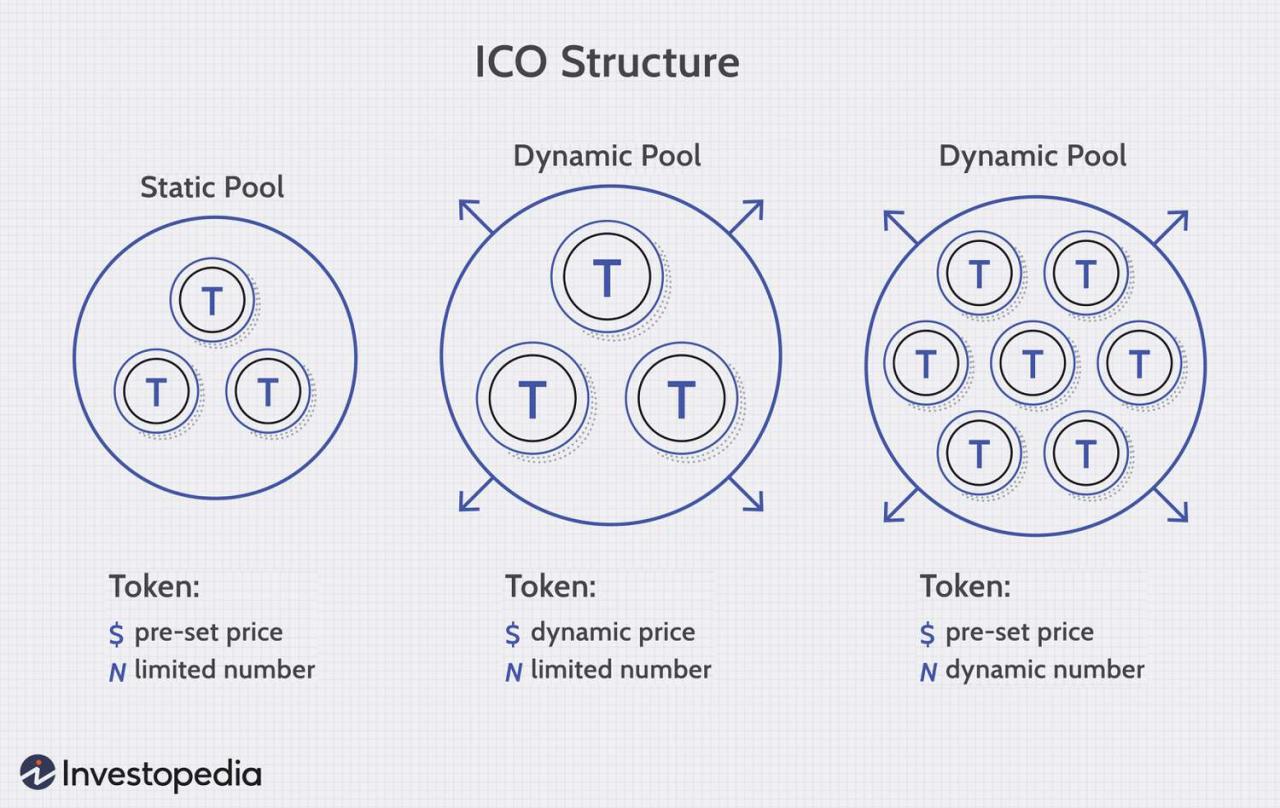
Initial Coin Offering (ICO): An Explanation and Guide to Participation
Introduction:
An Initial Coin Offering (ICO) is a fundraising mechanism used by startups and blockchain projects to raise capital by distributing a new cryptocurrency or token to investors. ICOs have gained immense popularity in recent years, offering investors the opportunity to participate in early-stage projects with the potential for high returns.
How ICOs Work:
- Project Definition: The team behind the project defines the problem they are solving, the value of their solution, and the details of the token they will issue.
- Whitepaper Publication: The team publishes a whitepaper that outlines the project’s technical details, market analysis, and funding allocation.
- Token Creation: Based on the whitepaper, the project creates a new cryptocurrency or token on a blockchain platform.
- Token Sale: The tokens are sold to investors through a crowd sale, often conducted on specific platforms or websites.
- Funding Raised: The proceeds from the token sale are used to fund the project’s development and operations.
Benefits of ICOs:
- Access to Early-Stage Projects: ICOs provide investors with the opportunity to support promising startups before they are fully developed.
- Potential for High Returns: Tokens issued in ICOs often have significant appreciation potential if the project succeeds.
- Transparency: ICOs are typically conducted on blockchain platforms, ensuring transparency and accountability.
- Diversification: ICOs offer exposure to a wide range of blockchain and cryptocurrency projects, diversifying investment portfolios.
How to Participate in an ICO:
- Research: Thoroughly research the project, team, and whitepaper to understand the offering’s legitimacy and potential.
- Due Diligence: Conduct independent due diligence to verify the project’s claims and assess the risks involved.
- Create an Account: Sign up on the platform where the ICO is being held and create a crypto wallet for storing the purchased tokens.
- Purchase Tokens: Follow the instructions to purchase tokens using Bitcoin, Ethereum, or other cryptocurrencies.
- Store Tokens: After the ICO concludes, transfer your tokens to a secure crypto wallet for safekeeping.
Risks of ICOs:
- Fraudulent Projects: Not all ICOs are legitimate, and fraudulent projects can scam investors of their funds.
- Market Volatility: Cryptocurrency markets are highly volatile, and token values can fluctuate significantly.
- Regulatory Uncertainty: ICOs face ongoing regulatory uncertainty, which may affect their legality and operations.
- Lack of Dividends: Most tokens do not pay dividends, so investors rely solely on appreciation for returns.
Conclusion:
ICOs can offer investors access to early-stage projects with the potential for high returns. However, it’s crucial to approach ICOs with caution, conducting thorough research and understanding the associated risks. By carefully considering these factors, investors can make informed decisions and maximize their chances of successful ICO participation.


